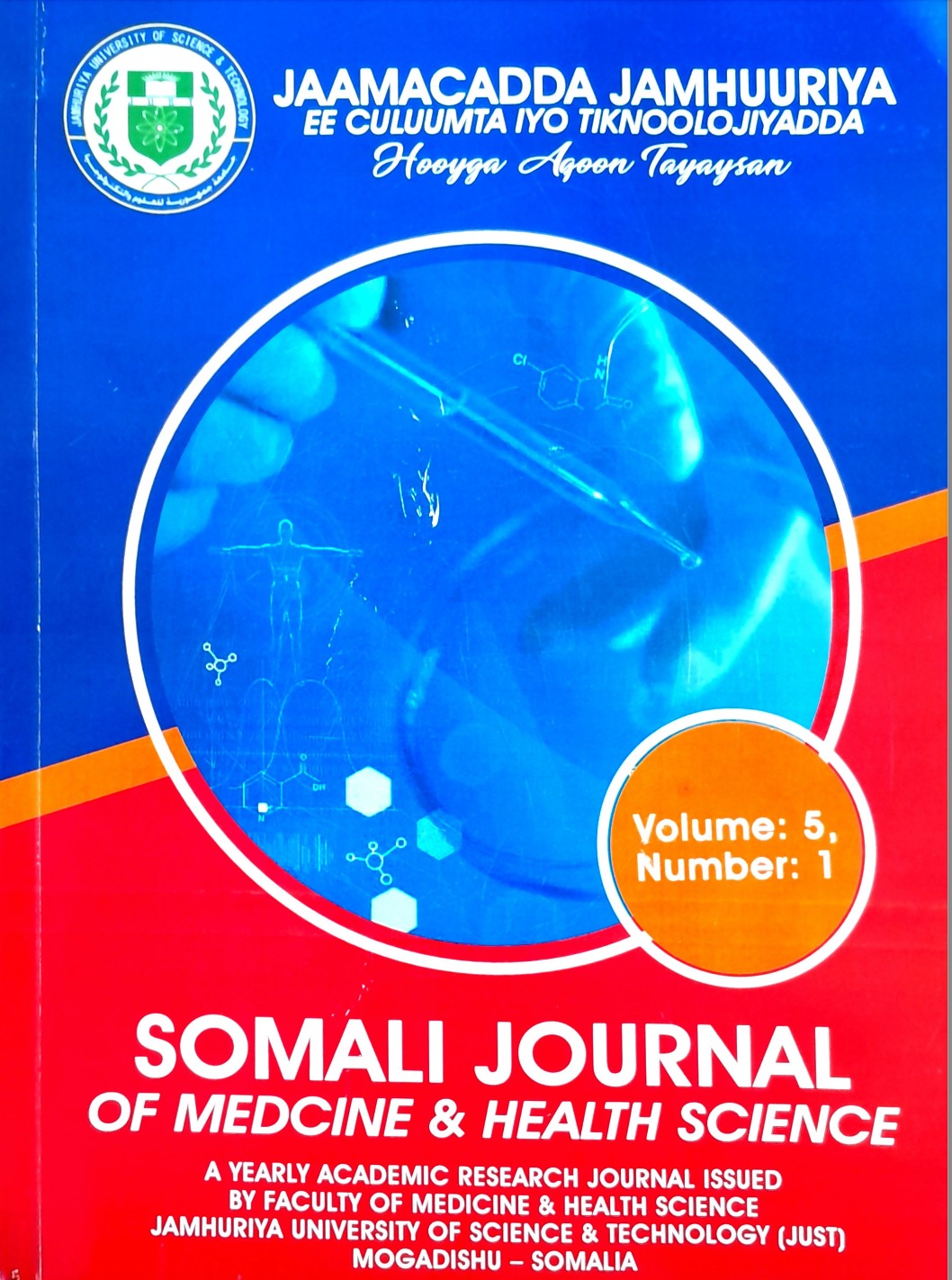Prevalence of Giardia Lamblia among Children Attended at SOS Hospital
DOI:
https://doi.org/10.59067/afjhms.v5i1.47Keywords:
Gardi Lamblia, Giardiasis, Children, SOS HospitalAbstract
Background: Giardia lamblia is considered to be one of the leading causative agents of diarrhea, especially in children. Epidemiological surveys have shown that parasitic diarrhea in children is primarily due to G. lamblia infection Giardia lamblia can result in reduced physical fitness, delayed growth and gastrointestinal problems, such as abdominal pain, vitaminB12 deficiency and malabsorption about 200 million people have symptomatic giardiasis. In areas where sanitation and hygiene are poor the disease is most severe
Objective: To identify prevalence of giardia lamblia among children attended at SOS hospital in Mogadishu Somalia.
Methods and Materials: study was descriptive cross-sectional study conducted in SOS hospital, Mogadishu-Somalia during May 2020 to june2020; 50 stool samples were collected from the patients attending at SOS hospital. The Stool was to identify under microscope Examination used for wet preparation method. The study used SPSS (version 20.0) for analysis, and results were presented in frequencies, percentage, and bar charts.
Results: 50 sample stools were collected from patient with suspected parasitic infection SOS hospital different age groups and both sexes were covered. When we made diagnosis test of stool ni 8(16%) were giardia lamblia cyst seen also when we made diagnosis test ni 2(4%) were giardia lamblia trophozoite, during diagnosing I have seen other parasites, 9(18%) were Ascaris lubricoides ova seen, 7(14%) were T.T ova seen, 5(10%) were H.nan egg seen, 4(8%) were E.histolytic, when we made diagnose test of giardia lamblia in 15(30%) were negative.
Conclusion: the results from the study showed high rate of giardia lamblia infection and also another parasite. We have identified domestic factors like mother education, no. of under-five children in the family, low SES and peri-domestic factors like lack of solid waste collection and visible sewage near the house. We emphasize the pro-vision of health care services, personal education and environmental hygiene by both governmental and non-governmental organization to reduce this high prevalence. Regular diagnosis should be available and treatment should be provided for infected and vulnerable communities.


